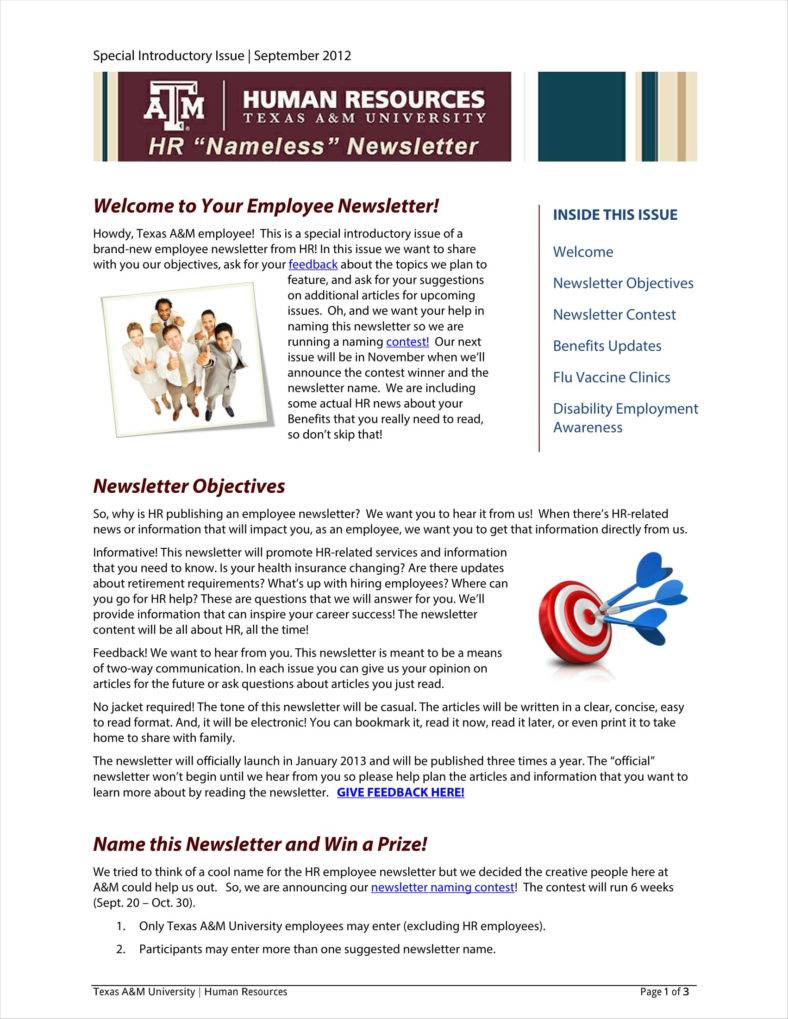

Short anecdotes and lived experiences make for great learning opportunities when shared in the right context and with the right emphasis. Explain your message in clear terms that make it easy to grasp the meaning.Mix up your punctuation, from occasional exclamation points to the ever-professional semi-colons!.Find a balance between a conversational and a more formal tone.Remove redundant, repetitive, and unnecessary words.Use bulleted lists to break up dense paragraphs of information.We’ve already touched on the importance of tone and formatting for solving the overcrowded channel problem, but don’t forget the basics! When writing your newsletter, consider doing the following: Writing newsletters your staff will want to read starts with the reader in mind! 4. You can still include those adjectives and go into detail when necessary, but be concise. On that note, keep your internal newsletters short and to the point.

It’s no secret, but big blocks of text-especially on mobile devices-are more of an eye strain to read compared to shorter lines of text. Sending updates across multiple channels is also quite common, so be considerate of how your messaging will display and read for different contexts. How you structure and write your newsletter-along with the actual content included-will vary depending on the formality of the channel, along with other factors such as the number of employees and your particular industry. While email communication is the first thing that often comes to mind when you hear the word “newsletter,” many companies today also make use of alternative channels to send company-wide updates. Your approach will vary depending on your organization what’s important is to provide something valuable for staff members of all levels. Need we mention the benefits of increased dialogue and more dynamic communication? Hearing from multiple leaders, directors, and managers from different teams on a company-wide forum deepens collective insights. This could mean having multiple people from different departments contributing to a single message or, as is more often the case, a variety of leadership team members sending out their own company-wide updates throughout the year. Depending on your organization’s size and who’s writing your internal communications, don’t overlook the power of working collaboratively. We often think of the final product in creative settings, whether that’s an employee newsletter, client deliverable, or anything else. At the root, the best content will grab readers’ attention by its very nature. There’s no one-size-fits-all approach here. So, if your newsletters sound like they were written by a robot, chances are employees won’t be thrilled to read them.Ĭreating newsletters people want to read also involves picking the right topics! Maintain a healthy balance between content focused on your company, your employees, and the work you do for clients or customers. Even if you’re not a motivational speaker by profession, enthusiasm transfers. Keep it light, genuine, and action-oriented. Who will be reading this newsletter that you’ve been working so hard to write? What are they like? What do they care about?įirst, be considerate of tone. Think of all of the people at your company. Keep in mind that an internal newsletter is not only meant to provide updates but also to create opportunities for interaction between team members. 6 Tips for Writing Amazing Employee NewslettersĪ few best practices stand out when it comes to creating and sending employee newsletters.
#Best employee newsletters crack
So how can you crack the riddle and kickstart your employee newsletter engagement? In this article, we put together some of our favorite employee newsletter ideas, tips, and best practices to inspire and strengthen your internal communications. But even in the most successful companies, it can be hard to capture people’s attention in our busy and distraction-prone world. How did everyone feel? Was there something that was unclear or something especially beneficial what stood out? Maintaining employee engagement-especially in hybrid and remote work environments-is an ongoing process that changes as the people in your organization change. Beyond metrics like open rates, did your message resonate? You may get some feedback here and there, but it’s hard to know how content was received (and if it was read in the first place). Sending any kind of newsletter can feel a bit like talking into a black hole.


 0 kommentar(er)
0 kommentar(er)
